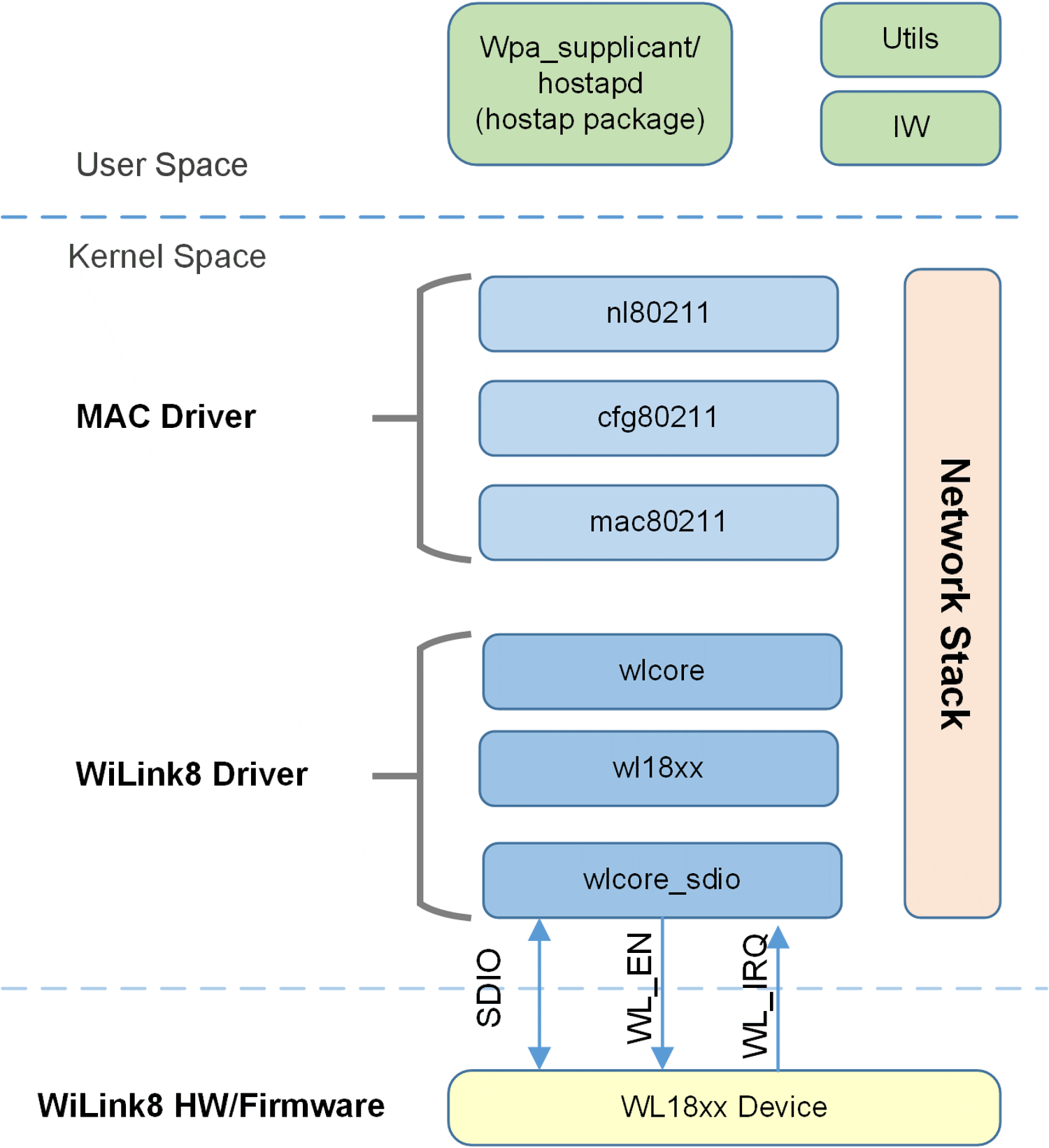SWRU561A September 2020 – October 2020 WL1801MOD , WL1805MOD , WL1807MOD , WL1831 , WL1831MOD , WL1835MOD , WL1837MOD
2 WL18xx Linux Driver Architecture Overview
WL18xx Linux driver uses the open source components along with interface driver for the device to realize Wi-Fi functionalities. Figure 2-1 shows the high level driver partitioning and architecture.
 Figure 2-1 WiLink8 Driver
Architecture
Figure 2-1 WiLink8 Driver
ArchitectureThe section below briefs the high-level components in the driver layers and their functionality.
- WiLink8 FW – The FW runs on the device HW to provide the PHY and MAC functionality of the Wi-Fi. The host communicates via SDIO to the WLAN device. On the device side, the WLAN MAC is responsible for the 802.11 MAC functions, and conveys WLAN packets from/to the external host to/from the FW. The MAC is responsible for the timing and the time critical decisions only. The PHY performs the 802.11 PHY functions of encoding/decoding and modulation/ demodulation, and is responsible for the RF functions of up/down modulation to carrier frequency, filtering and amplification.
- WiLink Driver is an abstraction layer
to the device HW and FW. Implements low level operations required to support the MAC
driver.
- wlcore: Implements the low level driver for WiLink devices, supporting mac80211 operations. Contains the common functions for all supported WiLink chipsets.
- Wl18xx: Implement chip specific functions and services. Supports the wlcore by implementing HW-specific functions.
- wlcore_sdio: Adaptation layer between the SDIO driver and the WiLink driver.
- MAC Driver implements layer-2 Wi-Fi
protocol requirements (data and control path). This is a generic component, not
platform/device specific. This layer consists of the following components.
- nl80211: Implements a net-link interface between user-space and kernel space components of the Linux Wireless solution.
- cfg80211: The Linux wireless configuration API. (This is the lowest layer that is common for both soft-MAC and hard-MAC).
- mac80211: The Linux kernel module implementing MAC-layer functions for Wi-Fi Soft-MAC solution.
- Hostap package: Contains open-source user-space package. Provides the upper-management layers for all WLAN roles (STA, AP, P2P and Mesh). Generates 2 daemons: wpa_supplicant (STA, P2P, Mesh), and hostapd (AP).
- Utilities provide initialization and configuration services. Implement debug and statistics capabilities.